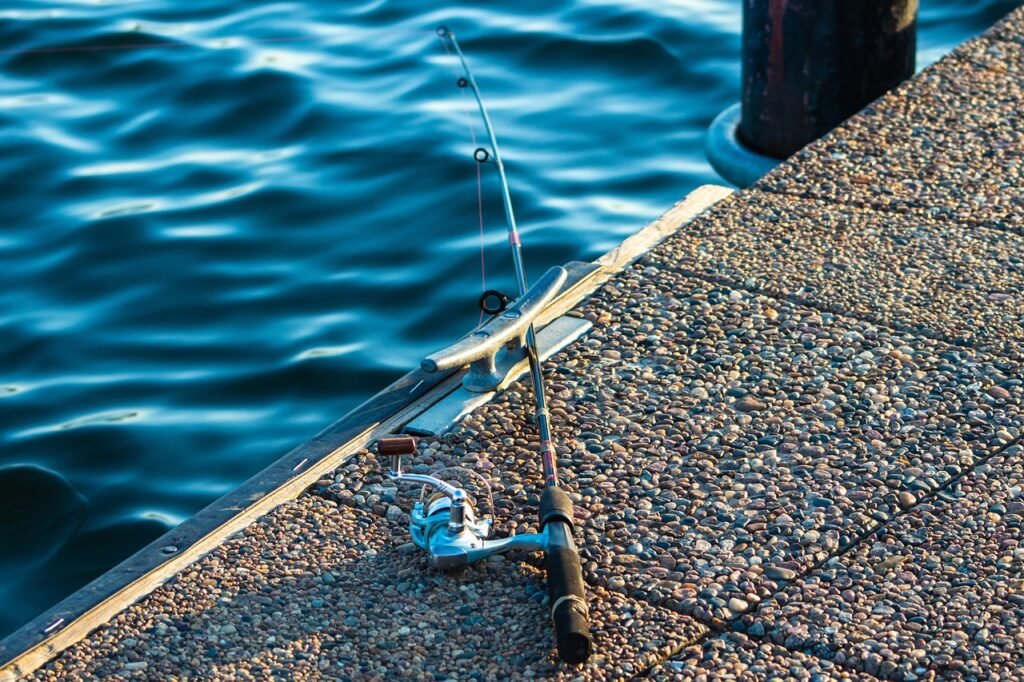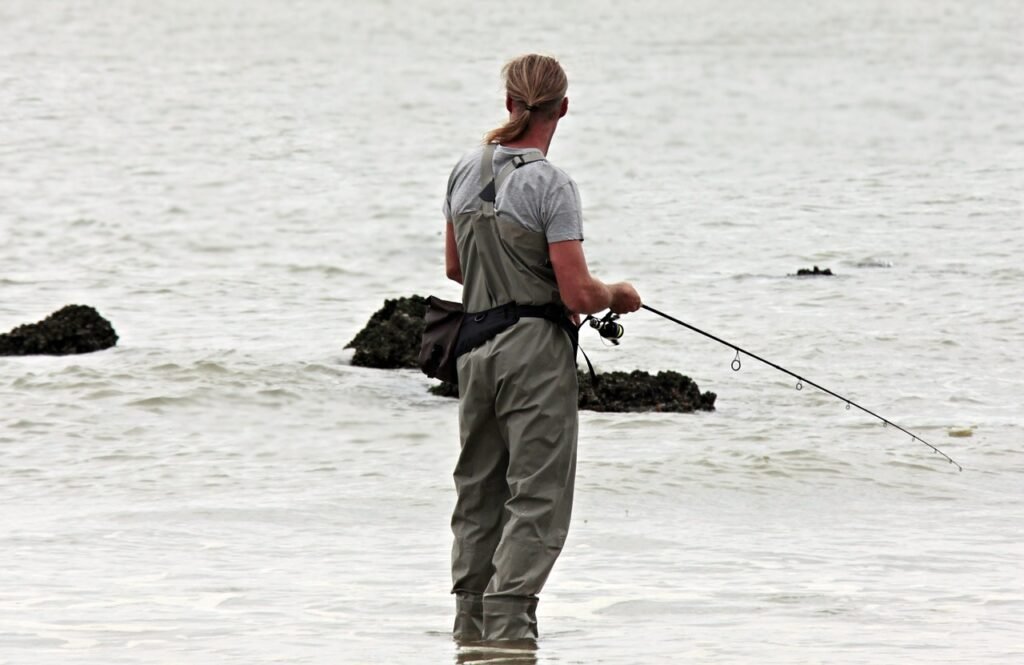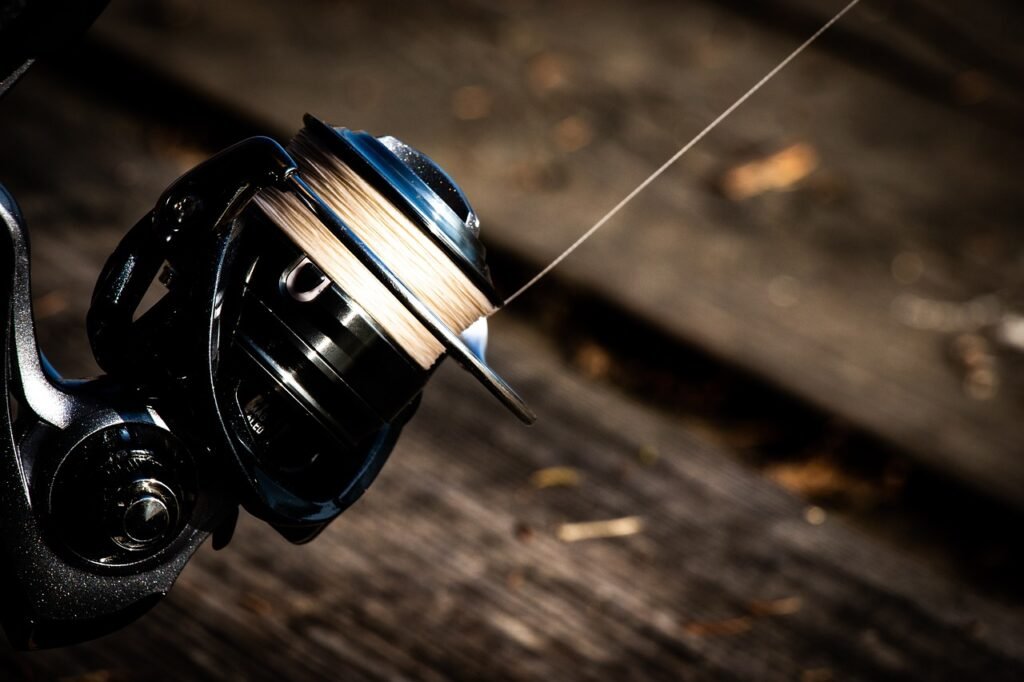
Are you an avid trout angler in search of the perfect spinning rod to enhance your fishing experience? Look no further!
In this comprehensive guide, we will take you through everything you need to know about choosing the best spinning rod for trout fishing.
When it comes to trout fishing, having the right equipment is essential for success on the water.
A high-quality spinning rod can make all the difference in casting accuracy and control, as well as providing the strength and flexibility you need to handle different trout species and varying fishing conditions.
In this guide, we will walk you through the key factors to consider when selecting a spinning rod, including length, power, action, and material.
We will also provide you with expert advice on matching the rod with the appropriate reel and line weight, as well as tips on choosing the best rod for specific trout fishing techniques.
Whether you prefer to fish in rivers, streams, or lakes, this ultimate guide will equip you with the knowledge to make an informed decision and find the best spinning rod to meet your trout fishing needs.
Get ready to elevate your angling game and reel in those trophy-size trout!
Understanding The Different Types Of Spinning Rods

When it comes to spinning rods, there are several different types available on the market.
Understanding the differences between these types will help you make an informed decision when selecting a rod for trout fishing.
1. Ultra-Light Spinning Rods: These are the lightest and most sensitive spinning rods available. They are designed for fishing with light lines and small lures, making them perfect for targeting small to medium-sized trout in streams and rivers.
Ultra-light spinning rods are typically shorter in length, ranging from 5 to 7 feet, providing excellent maneuverability in tight spaces.
2. Light Spinning Rods: Light spinning rods offer a good balance between sensitivity and power. They are suitable for targeting medium-sized trout in various fishing environments, including rivers, streams, and lakes.
These rods have a moderate length, ranging from 6 to 7.5 feet, providing a good casting distance and control.
3. Medium Spinning Rods: Medium spinning rods offer more power and strength compared to ultra-light and light spinning rods.
They are designed for targeting larger trout and can handle heavier lines and lures. Medium spinning rods have a length ranging from 6.5 to 8 feet, providing increased casting distance and control.
4. Heavy Spinning Rods: Heavy spinning rods are the most powerful and sturdy spinning rods available. They are designed for targeting large trout and can handle heavy lines and lures.
These rods have a length ranging from 7 to 9 feet, providing excellent casting distance and control when fishing in larger bodies of water.
Understanding the different types of spinning rods will help you determine which one is best suited for your trout fishing needs. Consider the size of trout you plan to target, the fishing environment you will be in, and your personal preferences when making your selection.
Factors To Consider When Choosing A Spinning Rod For Trout Fishing

When choosing a spinning rod for trout fishing, there are several key factors to consider.
These factors will help you find a rod that is well-suited to the specific conditions and techniques you will be using.
1. Length: The length of a spinning rod plays a crucial role in casting distance, accuracy, and control.
Shorter rods are generally more maneuverable and better suited for fishing in tight spaces like streams and rivers.
Longer rods, on the other hand, provide increased casting distance and control, making them ideal for fishing in larger bodies of water like lakes.
2. Power: Power refers to the amount of force required to bend the rod. For trout fishing, you’ll want a spinning rod with light to medium power.
Light power rods are ideal for targeting small to medium-sized trout, while medium power rods are better suited for larger trout.
The power of the rod will determine its ability to handle different line weights and lure sizes.
3. Action: Action refers to the flexibility of the rod and how it bends when pressure is applied.
There are three main types of rod action: fast, medium, and slow.
Fast action rods bend mostly at the tip, providing increased sensitivity and responsiveness.
Medium action rods bend more towards the middle, providing a good balance between sensitivity and power.
Slow action rods bend throughout the entire length, providing maximum flexibility and forgiveness.
For trout fishing, a fast or medium action rod is generally recommended.
4. Material: The material of the spinning rod plays a significant role in its overall performance.
The most common materials used for spinning rods include graphite, fiberglass, and a combination of both.
Graphite rods are lightweight, sensitive, and provide excellent casting distance and accuracy. Fiberglass rods, on the other hand, are more durable and have a slower action, making them better suited for beginners or anglers who prefer a more forgiving rod.
Combination rods offer a balance between the two materials, providing a good compromise of strength, sensitivity, and flexibility.
Considering these factors will help you narrow down your options and find a spinning rod that suits your trout fishing style and preferences.
Keep in mind that personal preference also plays a role, so it’s essential to test different rods if possible before making a final decision.
The ideal length and action for trout fishing

When it comes to trout fishing, the ideal length and action of a spinning rod can greatly impact your fishing experience.
Choosing the right combination of length and action will help you achieve optimal casting distance, accuracy, and control.
1. Length: The length of a spinning rod for trout fishing depends on the fishing environment and personal preference.
For fishing in streams and rivers, shorter rods ranging from 5 to 7 feet are generally recommended. Shorter rods provide increased maneuverability and control, allowing you to navigate tight spaces and cast accurately around obstacles.
On the other hand, if you plan to fish in larger bodies of water like lakes, longer rods ranging from 6.5 to 8 feet are more suitable.
Longer rods offer increased casting distance and control, allowing you to cover more water efficiently.
2. Action: The action of a spinning rod is determined by how much the rod bends when pressure is applied.For trout fishing, a fast or medium action rod is generally recommended.
Fast action rods bend mostly at the tip, providing increased sensitivity and responsiveness. This allows you to detect subtle bites and make quick, accurate hooksets.
Medium action rods bend more towards the middle, providing a good balance between sensitivity and power. They are versatile and can handle a wide range of trout fishing techniques and conditions. Avoid slow action rods for trout fishing, as they may lack the necessary sensitivity and responsiveness needed for this type of angling.
Finding the ideal length and action for your spinning rod will require some experimentation and consideration of your specific fishing needs.
If possible, try casting different lengths and actions to gauge which combination feels most comfortable and suits your fishing style.
Material and construction of spinning rods for trout fishing

The material and construction of a spinning rod greatly influence its performance and durability.
Understanding the different materials and construction techniques will help you choose a rod that meets your trout fishing requirements.
1. Graphite: Graphite is a popular material used in spinning rods due to its lightweight and sensitive nature. Graphite rods offer excellent casting distance and accuracy, making them ideal for trout fishing.
They are also highly sensitive, allowing you to detect even the slightest nibble. Graphite rods are generally more expensive but provide superior performance and responsiveness.
2. Fiberglass: Fiberglass rods are known for their durability and flexibility. They are less sensitive than graphite rods but offer more forgiveness, making them suitable for beginners or anglers who prefer a more forgiving rod.
Fiberglass rods are also more affordable compared to graphite rods, making them a popular choice for entry-level anglers.
3. Composite: Composite rods are made from a combination of graphite and fiberglass. These rods offer a balance between the two materials, providing a good compromise of strength, sensitivity, and flexibility.
Composite rods are versatile and can handle various trout fishing techniques and conditions. They are often more affordable than graphite rods while still offering excellent performance.
In addition to the material, the construction of the spinning rod is also essential. Look for rods with high-quality guides, reel seats, and handles. Guides should be smooth and durable, allowing the line to flow freely during casting and retrieval.
The reel seat should securely hold the reel in place without any wobbling or looseness.
The handle should be comfortable and ergonomic, providing a firm grip and reducing fatigue during long fishing sessions.
Considering the material and construction of a spinning rod will ensure that you invest in a high-quality and durable rod that will enhance your trout fishing experience.
Choosing the right reel for your spinning rod

Choosing the right reel to pair with your spinning rod is crucial for achieving optimal performance on the water.
The reel should complement the rod’s specifications and meet your specific fishing needs.
1. Size: The size of the reel should match the size of the spinning rod. For ultra-light and light spinning rods, a small-sized reel is recommended.
Medium spinning rods work well with medium-sized reels, while heavier spinning rods require larger-sized reels.
Matching the reel size to the rod ensures a balanced setup and prevents any imbalances during casting and retrieval.
2. Gear Ratio: The gear ratio of the reel determines the speed at which the line is retrieved. For trout fishing, a moderate gear ratio of around 5:1 is generally recommended.
This provides a good balance between speed and power, allowing you to retrieve the line efficiently without overpowering the fish.
3. Drag System: The drag system of the reel is essential for controlling the amount of pressure exerted on the fish during the fight.
For trout fishing, a smooth and adjustable drag system is crucial.
This allows you to apply the right amount of pressure to tire out the fish without risking line breakage.
4. Reel Material: The material of the reel should be durable and resistant to corrosion.
Spinning reels are commonly made from aluminum, graphite, or a combination of both.
Aluminum reels are more robust and provide better durability, but they can be heavier.
Graphite reels are lighter but may not be as durable.
Consider your fishing environment and personal preference when choosing the material of the reel.
Pairing the right reel with your spinning rod will ensure a well-balanced and efficient setup for trout fishing.
Take your time to research different reel options, read reviews, and consider your specific fishing needs before making a final decision.
Additional features to look for in a spinning rod for trout fishing

When selecting a spinning rod for trout fishing, there are additional features that you may want to consider.
These features can enhance your fishing experience and provide added convenience on the water.
1. Split-Grip Handle: Some spinning rods feature a split-grip handle design, where the handle is divided into two sections.
This design reduces the overall weight of the rod and provides better sensitivity and control. Split-grip handles also offer improved ergonomics, reducing fatigue during long fishing sessions.
2. Hook Keeper: A hook keeper is a small device located near the handle of the spinning rod. It allows you to securely attach your hook or lure when not in use, preventing tangles and accidents.
Having a hook keeper on your spinning rod can save you time and frustration while on the water.
3. Line Guides: High-quality line guides are crucial for smooth line flow during casting and retrieval. Look for spinning rods with durable and smooth line guides that are designed to reduce friction and prevent line wear.
Ceramic or stainless steel guides are commonly used for their excellent performance and durability.
4. Warranty: Consider the warranty offered by the manufacturer when selecting a spinning rod.
A good warranty provides peace of mind and ensures that you are protected against any defects or issues with the rod.
Check the warranty terms and conditions, as well as any limitations or exclusions that may apply.
While these additional features are not essential, they can greatly enhance your fishing experience and provide added convenience while on the water.
Consider your personal preferences and fishing style when deciding which features are most important to you.
Recommended spinning rods for trout fishing
Recommended spinning rods for trout fishing

*If you click on links we provide, we may receive compensation.
Now that we have covered the key factors to consider when choosing a spinning rod for trout fishing, let’s take a look at some recommended options that cater to different preferences and budgets.
1. St. Croix Trout Series Spinning Rod: The St. Croix Trout Series Spinning Rod is a top-notch option for trout anglers. It is available in different lengths and actions, allowing you to choose the perfect rod for your fishing needs.
The rods are constructed with high-quality SCII graphite, providing excellent sensitivity and durability.
The split-grip handle design and premium line guides add to the overall performance and value of this spinning rod.
2. Ugly Stik Elite Spinning Rod: The Ugly Stik Elite Spinning Rod is a popular choice among anglers for its exceptional durability and sensitivity.
It features a combination of graphite and fiberglass construction, offering a good balance of strength and flexibility.
The Ugly Stik Clear Tip design provides increased sensitivity, allowing you to detect even the slightest nibble.
This spinning rod is available in various lengths and actions, catering to different trout fishing techniques and conditions.
3. Fenwick HMG Spinning Rod: The Fenwick HMG Spinning Rod is a high-performance rod designed for serious trout anglers.
It features a carbon-bound rod blank technology that provides increased sensitivity and strength.
The TAC handle offers a comfortable and secure grip, reducing fatigue during long fishing sessions.
This spinning rod is available in different lengths and actions, ensuring there is an option for every angler’s preference.
These are just a few examples of spinning rods that are highly regarded among trout anglers. It’s essential to consider your specific fishing needs, budget, and personal preferences when choosing a spinning rod.
Take the time to research different options, read reviews, and, if possible, test out the rods before making a final decision.
Tips for maintaining and caring for your spinning rod

To ensure the longevity and performance of your spinning rod, it’s crucial to properly maintain and care for it.
Here are some tips to help you keep your spinning rod in top condition:
1. Rinse after each use: After each fishing trip, rinse your spinning rod with freshwater to remove any salt, sand, or dirt that may have accumulated.
Pay particular attention to the guides, reel seat, and handle, as these areas are more prone to corrosion and damage.
2. Avoid high-impact situations: Spinning rods are designed to bend and flex, but they are not indestructible.
Avoid high-impact situations that can lead to damage, such as dropping or slamming the rod against surfaces.
Treat your spinning rod with care and store it in a protective case or rod tube when not in use.
3. Check for damage: Regularly inspect your spinning rod for any signs of damage, such as cracked guides or a loose reel seat.
If you notice any issues, have them repaired or replaced immediately to prevent further damage and potential breakage.
4. Reel maintenance: In addition to caring for your spinning rod, it’s important to maintain your reel as well.
Clean and lubricate the reel according to the manufacturer’s instructions to ensure smooth operation and prevent corrosion.
5. Store properly: When storing your spinning rod, avoid exposing it to extreme temperatures or direct sunlight. Store it in a cool, dry place.

